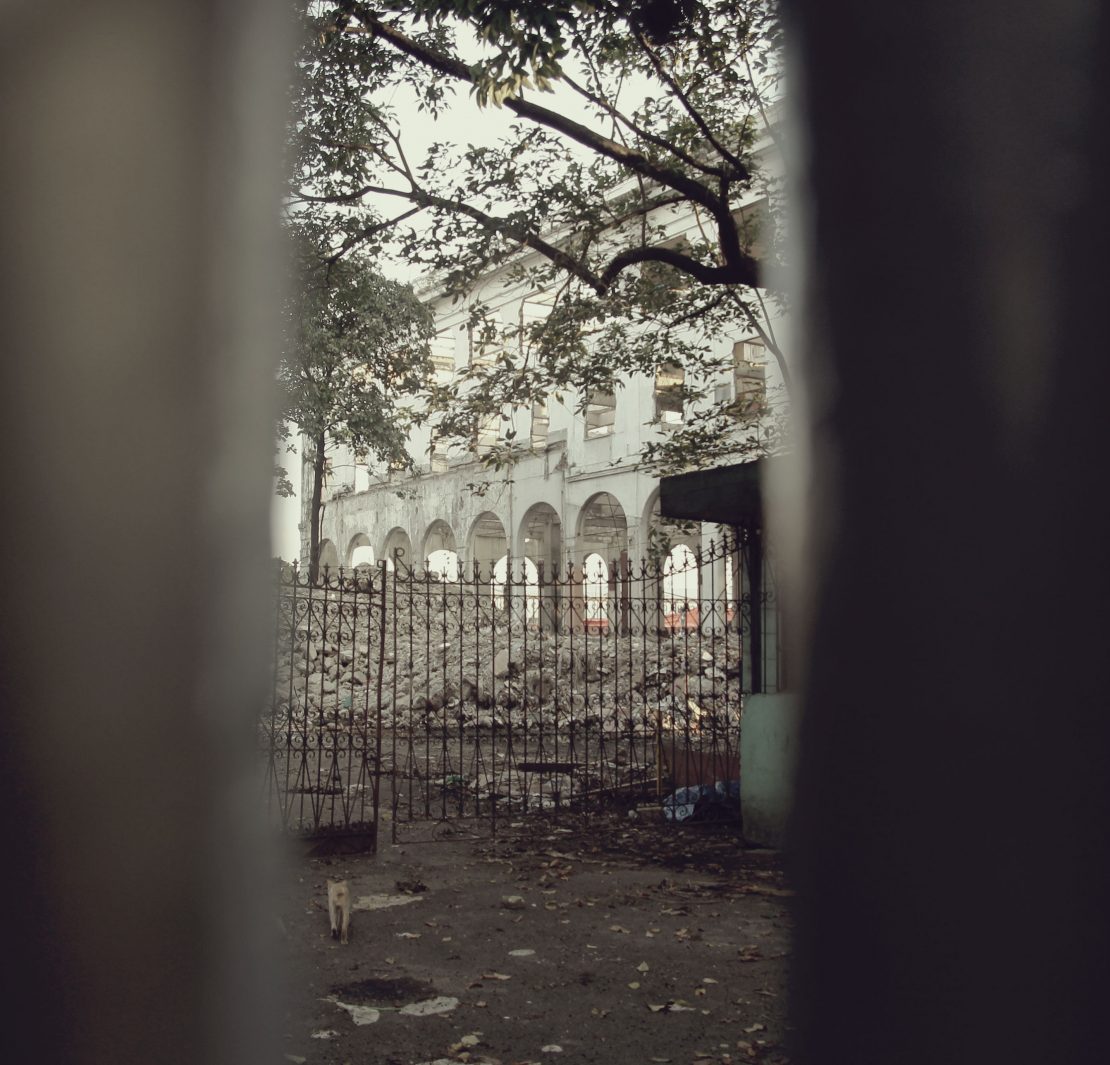Before anyone knew what was happening, the deed was done. When it came to light that the Manila Army and Navy Club was being redeveloped into a boutique hotel by Oceanville Hotel and Spa Corporation, the old landmark found itself all over the news. Coverage photos depicted construction trucks surrounding the structure like accessories to a crime, with only the building façade left standing.
More than a hundred years ago, the Manila Army and Navy Club began as an exclusive social club for American military officers. William Parsons designed it as part of Daniel Burnham’s grand urbanization plan for Metro Manila. After hosting parties and stage plays for the elite, it went on to survive its designation as a bomb shelter and evacuation center during the Second World War. The National Historical Commission of the Philippines (NHCP) acknowledged these feats of cultural significance and declared it a national historical landmark on April 26, 1991.
Not long after its short stint as Museo ng Maynila during the mid-’90s, the building finally succumbed to corrosion, weathering, and neglect. Palafox Associates, the architectural firm tasked with its restoration, claimed that if the structure’s damages were not addressed, the building would be in danger of collapsing.
NHCP has attempted to reconcile the developer’s intentions with public interest by describing the club’s current redevelopment as “adaptive reuse.” This implies that Oceanville will not demolish the building and that their intention is to restore the façade to its original design, while disaster-proofing and retrofitting the structure for hotel functions.
But problems arose as soon as the process started. The Manila City Hall and NHCP granted project clearances without seeing detailed engineering studies, and Oceanville went underway with their demolition work, dismantling the two annexes and stripping the main building of its floors and windows, without providing a development plan first. They weren’t even sanctioned to touch the main building. When senator Pia Cayetano and the Heritage Conservation Society argued these points, NHCP issued a cease-and-desist order to the developers.
[blockquote pull=”left”]Restorations, when done haphazardly or without expert advice, could destroy the integrity and authenticity of a heritage structure—the very reasons it’s being restored in the first place. [/blockquote]The art and politics of restoration
Adaptive reuse is an arrangement the progressive conservationists at the Heritage Conservation Society advocate for. It links historical properties to the present and gives it new life. The restoration involved, though, may be more challenging than building from scratch. A historical property’s main shield is still the National Cultural Heritage Act of 2009. It states that any built structure older than 50 years is presumed an Important Cultural Property (ICP). This law makes it illegal to destroy, demolish, mutilate, or damage any ICP; the corresponding penalty is a P200,000 fine, a 10-year imprisonment, or both.
In the case of the Army and Navy Club, the problem was that the developers were able to furnish clearances without strictly adhering to procedures. This, in turn, probably led them to assume they could get away with sidestepping a few more.
Restorations, when done haphazardly or without expert advice, could destroy the integrity and authenticity of a heritage structure—the very reasons it’s being restored in the first place. To do it properly, one must be prepared to devote a lot of work and spend a lot of money, and these are what some developers neglect. “The government should strictly enforce heritage guidelines and smart zoning practices. They should also think twice about issuing permits for the construction of malls and condominiums,” says Paolo Bustamante, a blogger and heritage activist.
The aftermath
“There will be a second presentation of Oceanville’s development plan. The cease-and-desist order for the Manila Army and Navy Club will remain until it gets an approval,” architect Wilkie Delumen, NHCP’s Chief of Historic Preservation has stated in a text message. If given the green light, the project will allegedly cost Oceanville P1.5 billion and a minimum of P300,000 monthly for the lease.
A cultural property is a tangible milestone that celebrates the identity of the people, shaped by realities of the past and the possibility of a better future. And when the marks of our growth and identity are gone, how would we even know that we made any progress at all?
Writer: ANDREA LIBUNAO
PHOTOGRAPHY PAOLO BUSTAMANTE




